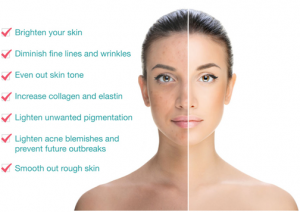Chemical peels can improve the skin’s appearance. In this treatment, a chemical solution is applied to the skin, which makes it “blister” and eventually peel off. The new skin is usually smoother and less wrinkled than the old skin.
When is a chemical peel appropriate?
Chemical peels are used to treat a number of conditions including:
- Acne scars
- Aging skin
- Crow’s feet
- Hyperpigmentation
- Melasma
- Scars
- Sun damaged skin
- Sagging skin
- Wrinkles
How Chemical Peels Are Done?
You can get a chemical peel in a doctor’s office or in a surgery center. It’s an outpatient procedure, meaning there’s no overnight stay.
The professional who does your peel will first clean your skin thoroughly. Then he or she will apply one or more chemical solutions — such as glycolic acid, trichloroacetic acid, salicylic acid, lactic acid, or carbolic acid (phenol) — to small areas of your skin. That creates a controlled wound, letting new skin take its place.
During a chemical peel, most people feel a burning sensation that lasts about five to ten minutes, followed by a stinging sensation. Putting cool compresses on the skin may ease that stinging. You may need pain medication during or after a deeper peel.
What To Expect After the Chemical Peel?
- Depending upon the type of chemical peel, a reaction similar to sunburn occurs following the procedure. Peeling usually involves redness followed by scaling that ends within three to seven days. Mild peels may be repeated at one to four-week intervals until you get the look you’re after.
- Medium-depth and deep peeling may result in swelling as well as blisters that may break, crust, turn brown, and peel off over a period of seven to 14 days. Medium-depth peels may be repeated in six to 12 months, if necessary.
- After treatment, you may need bandages for several days on part or all of the skin that was treated.
- You’ll need to avoid the sun for several months after a chemical peel since your new skin will be fragile.

